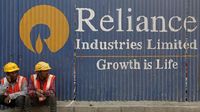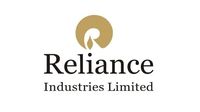Reliance Industries Ltd., one of India’s largest conglomerates, faced a significant stock price decline on April 7, 2025, amid a broader market downturn fueled by global economic concerns. The company's shares opened at ₹1,132.20, but plummeted by ₹73.55, or 6.11%, settling at ₹1,131.15. This drop has drawn attention as it reflects the ongoing volatility in the stock market, exacerbated by geopolitical tensions and economic uncertainty.
On the same day, other global markets were also in turmoil. For instance, Hong Kong's Hang Seng index fell over 9%, Japan's Nikkei dropped more than 6%, while Australia's ASX200 and South Korea's Kospi both declined by 5%. The panic in the markets was largely attributed to U.S. President Donald Trump's recent announcements regarding retaliatory tariffs, which have raised fears of an escalating trade war. Trump remarked, "I don't want anything (stocks) to go down, but sometimes you have to take medicine to fix something," indicating a firm stance on his trade policies.
For Reliance Industries, the stock's decline is part of a larger trend affecting many companies in India and across the globe. The previous close for Reliance was ₹1,204.70, and the stock reached a low of ₹1,114.85 during trading on April 7. The highest price for the day was ₹1,147.65. These fluctuations highlight the challenges faced by investors as they navigate a landscape marked by uncertainty.
Several factors have contributed to the drop in Reliance's stock price. First, the ongoing global market turmoil has had a ripple effect on investor sentiment. The uncertainty surrounding U.S. tariffs has prompted investors to flee equities in favor of safer assets like gold and bonds. As a major player in the global supply chain, Reliance is particularly vulnerable to these shifts.
Additionally, the company's diverse operations, including its telecom arm Jio and its petrochemical business, are facing sector-specific challenges. The telecommunications industry is experiencing intense price competition, while the petrochemical sector remains susceptible to fluctuations in global oil prices, which can be influenced by geopolitical events.
Moreover, the overall economic outlook has dimmed, with concerns about a potential global recession and reduced consumer spending. Companies like Reliance, which rely heavily on consumer-facing businesses, may see a slowdown in growth as consumers tighten their belts amid economic uncertainty.
Technical analysis offers further insights into the stock's performance. Reliance Industries has broken below key support levels, indicating a bearish trend. Currently, immediate support is seen around ₹1,115, with resistance levels at ₹1,145. Analysts suggest that the stock may continue to face downward pressure unless there is a significant improvement in market conditions.
Looking ahead, the upcoming earnings season for Reliance will be critical. Investors will closely monitor the company's performance in its retail and petrochemical segments. If Reliance reports strong results, it could help stabilize its stock price; however, continued uncertainty may lead to further declines.
On a broader scale, the market's reaction to global economic indicators, including inflation rates and trade policies, will likely impact Reliance and other companies in the coming weeks. The recent selloff has raised concerns about the sustainability of market growth, with many investors adopting a cautious approach.
In the context of the larger market, the Sensex index experienced a staggering drop of nearly 4,000 points on April 7, reflecting widespread panic among investors. The BSE Midcap and Smallcap indices also saw declines of up to 10% in early trading, indicating that the turmoil is not limited to large-cap stocks like Reliance.
Despite the challenges, some analysts maintain a bullish outlook on Reliance. Global brokerage Goldman Sachs recently reiterated its 'buy' rating for the stock, setting a price target of ₹1,640 per share. They noted that while the company's net asset value (NAV) discount has improved, it remains wide compared to historical averages.
Jigar S. Patel, Senior Manager of Equity Research at Anand Rathi Share and Stock Brokers, commented on the stock's technical situation, stating, "Reliance has broken below the key support level of ₹1,200 and is trading near ₹1,145. Support is seen around ₹1,100 and ₹1,050, while resistance levels are placed at ₹1,200 and ₹1,300." He advised long-term investors to consider accumulating shares near these support levels while cautioning traders about the heightened volatility.
As the market continues to react to global developments, investors are advised to stay informed and exercise caution. The performance of Reliance Industries and other major stocks will be closely watched in the coming weeks as the market seeks stability amid ongoing economic challenges.
In summary, the stock price of Reliance Industries Ltd. has seen a notable decline, reflecting broader market fears and economic uncertainties. Investors are urged to keep an eye on the company's upcoming earnings and the overall global economic landscape, as these factors will significantly impact the stock's trajectory.







